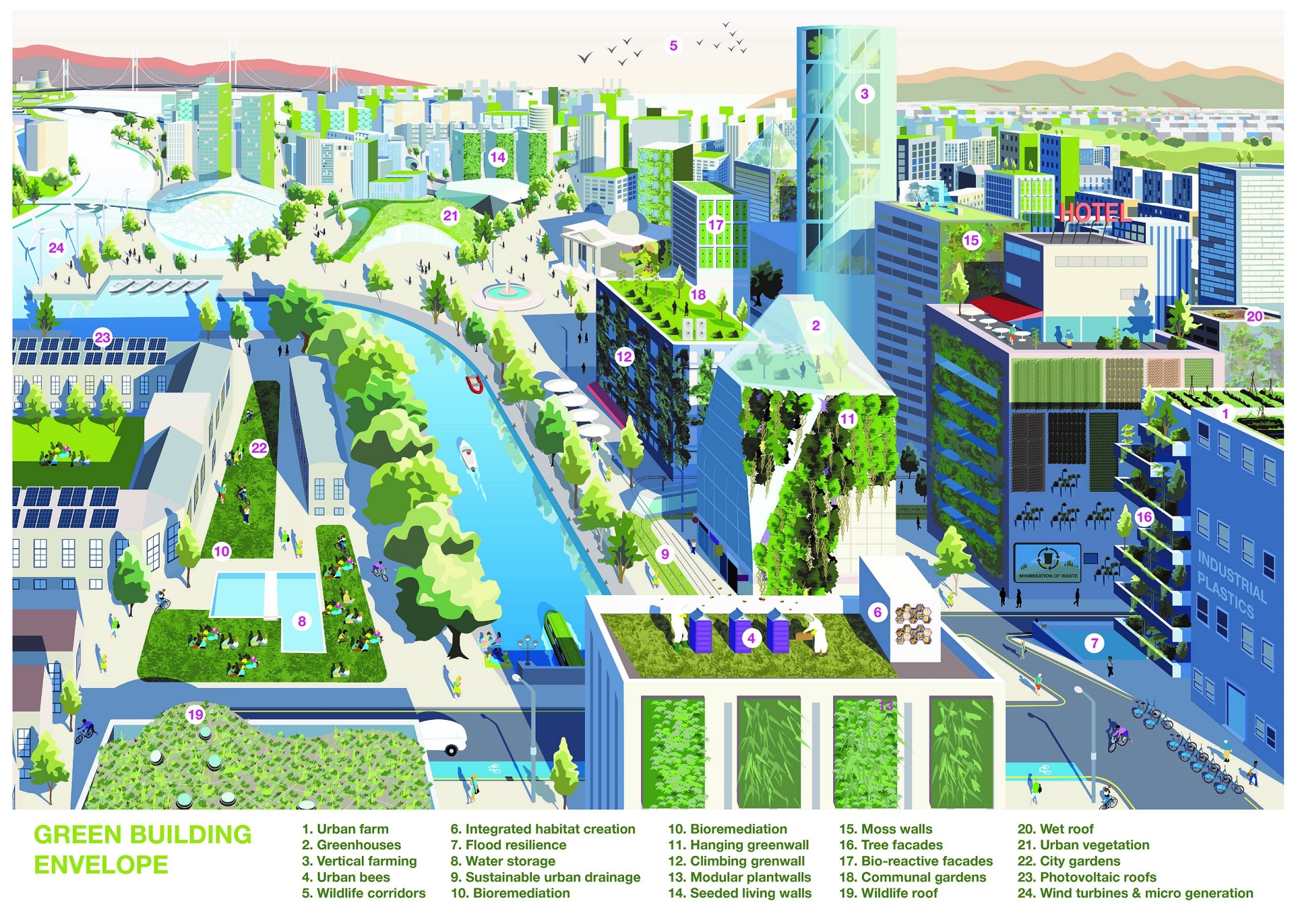Lucy Handley of CNBC writes:
Urban areas can help to reduce carbon emissions by learning from the natural environment – and provide community benefits at the same time, say experts.
Creating urban environments that work with nature is a focus for Malcolm Smith, global master planning and urban design leader at engineering firm Arup. “It’s not good enough just to sustain, in other words, to keep where we are. We have to restore and regenerate, and the natural systems are an important part of restoring our balance and regenerating some of the damage we’ve done (as humans),” he told CNBC by phone.
Arup has created Cities Alive, a series of research and events looking at future urban development, including a “green envelope” concept that looks at how adding green roofs and plants to the tops and sides of buildings could provide “significant” ways to improve the urban microclimate.

The concept includes ideas such as moss walls to attract insects, wet roofs to temporarily store water and help cool buildings naturally, and adding trees to the facades of buildings. These are part of Arup’s approach to “rewilding,” a term that in rural areas refers to the idea of letting nature take its course over a number of years. In cities, Arup defines it as being more about having the urban environment work better with natural phenomena, as Smith explained.
“It’s not necessarily about trying to recreate wilderness, but … for us, it’s about creating environments, which allow natural processes to thrive,” he said.
Read more: Nature-inspired techniques could help cities become greener
 Greenroofs.comConnecting the Planet + Living Architecture
Greenroofs.comConnecting the Planet + Living Architecture






GERARD GANTERT
I believe in this. We need our bees, butterflies, in addition to other beneficial insects.